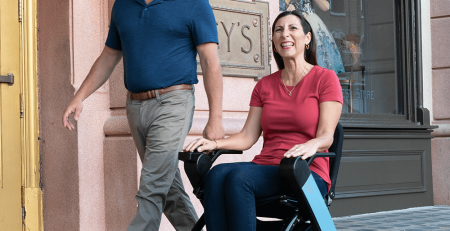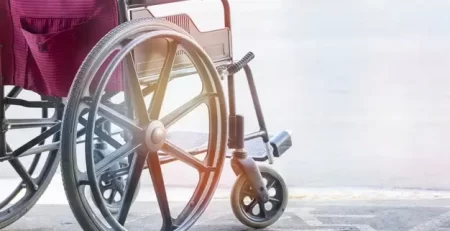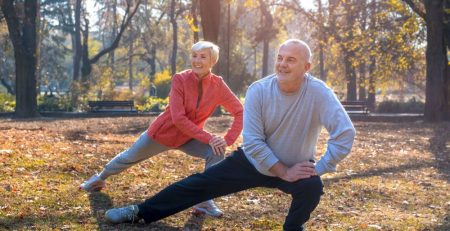- No products in the cart.
Ergonomic adaptive aids for arthritis
Individuals with arthritis often struggle with basic daily activities that may not be an issue for other people. While there are many types of arthritis that all have slightly different symptoms and prognosis, arthritis typically causes inflammation (or swelling), pain, stiffness, poor motion, and decreased strength to the joints that are affected. Smaller joints such as the fingers and wrists are especially susceptible to arthritis due to activities like typing, writing, and texting. However, arthritis can just as easily impact the lower back, knees, shoulders, and hips, causing people to experience difficulty walking, getting in and out of bed or chairs, and moving around their environment.
There are a variety of tools that can facilitate someone’s participation in daily activities that they once may have been unable to do because of arthritis. The key when looking for daily living tools is to ensure they are ergonomic, and this is typically a clear part of the label when it adequately describes the product. Tools that are ergonomic will encourage appropriate body posture to relieve pain and promote function for individuals with any health conditions. Ergonomic products also prevent the development of health conditions from improper use, posture, or form, that may be common within some people’s lives. Here are some ergonomic daily living aids that people can use to manage arthritis pain while engaging in a variety of activities:
T-grip
This grip is often made of a compliant material such as foam or other padding to allow for an easy grasp on a variety of objects. T-grips are versatile enough that they can be added to eating utensils, gardening tools, and more. They come in a variety of shapes and sizes to cater to your specific needs and the contours of your hand. Since they are compliant, they will shape more precisely to your hand with increased use.
Compression gloves
While this does not help with any specific daily activity, wearing compression gloves can help reduce swelling and inflammation that may result from some severe cases of arthritis, such as rheumatoid arthritis. By lowering amounts of swelling in the joints, these gloves can decrease pain and allow improved function in a range of daily activities from driving to typing to grocery shopping.
Automatic can opener
Some tools help make certain activities easier on the joints while other products are intended to avoid some high-risk and problematic tasks altogether. Automatic can openers fall under the latter of the two categories. The twisting and turning that is required by a standard can opener is very painful, repetitive, and straining on the small joints of the hand. Therefore, it is often recommended that individuals with arthritis (and other concerns that affect the joints of the hand) opt for automatic can openers to relieve pain during this activity and prevent further injury.
Standing desks
Believe it or not, sitting down is not good for the body. While this may be your go-to choice when you are in pain or not feeling well, this isn’t recommended for long periods of time. There is a saying, “A body in motion stays in motion and a body at rest stays at rest.” This is a more complicated way of saying that you must be active in order to remain active in the future. Individuals who have any kind of desk job would benefit from a standing desk that allows them to sit up and work without the use of a chair. This allows improved circulation in the entire body, leading to increased energy levels, smoother motion, and less stiffness or pain. Some people opt to use these desks for the majority of their work day, or when they are feeling most able to take a standing break.
Saddle chairs
When you do need to sit, it is important to have a chair that properly supports your body, keeps your spine in good alignment, and allows for plenty of motion at the same time. Saddle chairs are some of the best seating options for arthritis. Not only do they offer increased mobility at the hip joints (which has many of the same benefits we discussed for standing desks), but they also keep you more alert and some of them can actually build strength. Saddle chairs can come as stools without any back support, meaning they build your core strength because you cannot slouch and are required to remain upright while using them. Other models offer some lumbar support, but not as much as traditional chairs so they are still focusing on your core.
Knee pads
Joint protection is a huge part of managing arthritis successfully. Most of the tools mentioned so far allow people to more easily participate in activities by doing something they once could not, but they also help protect the joints at the same time. Knee pads focus primarily on this protection by offering some stability and cushion for any activity that may require kneeling or extensive use of the knees, such as gardening, exercising, carrying heavy items, and shoveling. Some people choose to get wearable knee pads or use built-up cushions that they can move with them as they work in the garden, for example.
Ergonomic mice
Excessive computer use is not good for the joints and one of the most common offenders of this pain is a bad mouse. By getting an ergonomic mouse, you can keep your wrist in a neutral position while using your thumb to click instead of the smaller and weaker joints and muscles in the pointer finger. The thumb is better equipped for this motion and the entire hand functions better when there is no pressure on the wrist, so a mouse with this configuration will do wonders for your hand. Don’t be thrown off by it’s strange appearance, as it’s quite a bit taller than your traditional computer mouse. Some also have a ball that allows you to use a gentle rolling motion (from any finger) as opposed to the abrupt pressure that is required for clicking.
Dycem
This is a great tool that therapists use often because of its versatility and ability to provide added grip strength for those with weak hands. It is most commonly used to give people more leverage when opening jars but dycem can also help you more securely carry small objects that are hard to manipulate. This material can also be wrapped around other objects as a cheap, DIY way to add grip and cushion to forks, spoons, knives, and large or awkward serving utensils.
Reacher
This adaptive equipment is commonly given to individuals who have just had knee or hip replacements. This is because reachers help people access objects that are on the ground or in places that they must kneel down to retrieve. As we mentioned, kneeling or bending over puts a lot of strain on the knees, hips, and back, which are often problems for individuals with arthritis. Reachers allow people to grab small objects like remote controls, clothing, notebooks, etc. to help them better interact with their environments.
Dressing tools
There are a range of devices that can be used to help people get dressed more easily. Clothing that has zippers, fasteners, or buttons can be very difficult for someone with arthritis to manipulate and, subsequently, wear. Zipper pulls are small objects that can be purchased and looped through clothing zippers to provide a bigger, more comfortable grip for someone to hold and effectively pull to put their clothing on or take it off. Someone can also easily DIY one of these by using a piece of string and a large button securely attached to their zipper. Another tool is a button hook which is a piece of wire on a wooden dowel that can be hooked around buttons and then threaded through buttonholes. This is a great way for people to avoid struggling with small, cumbersome buttons that are on their favorite articles of clothing.
As you can see, there are many adaptive equipment that is easily accessible for individuals living with arthritis. By using these tools, people can protect their joints, engage in the activities they love, maintain their independence, and ultimately enhance their quality of life at the same time.















